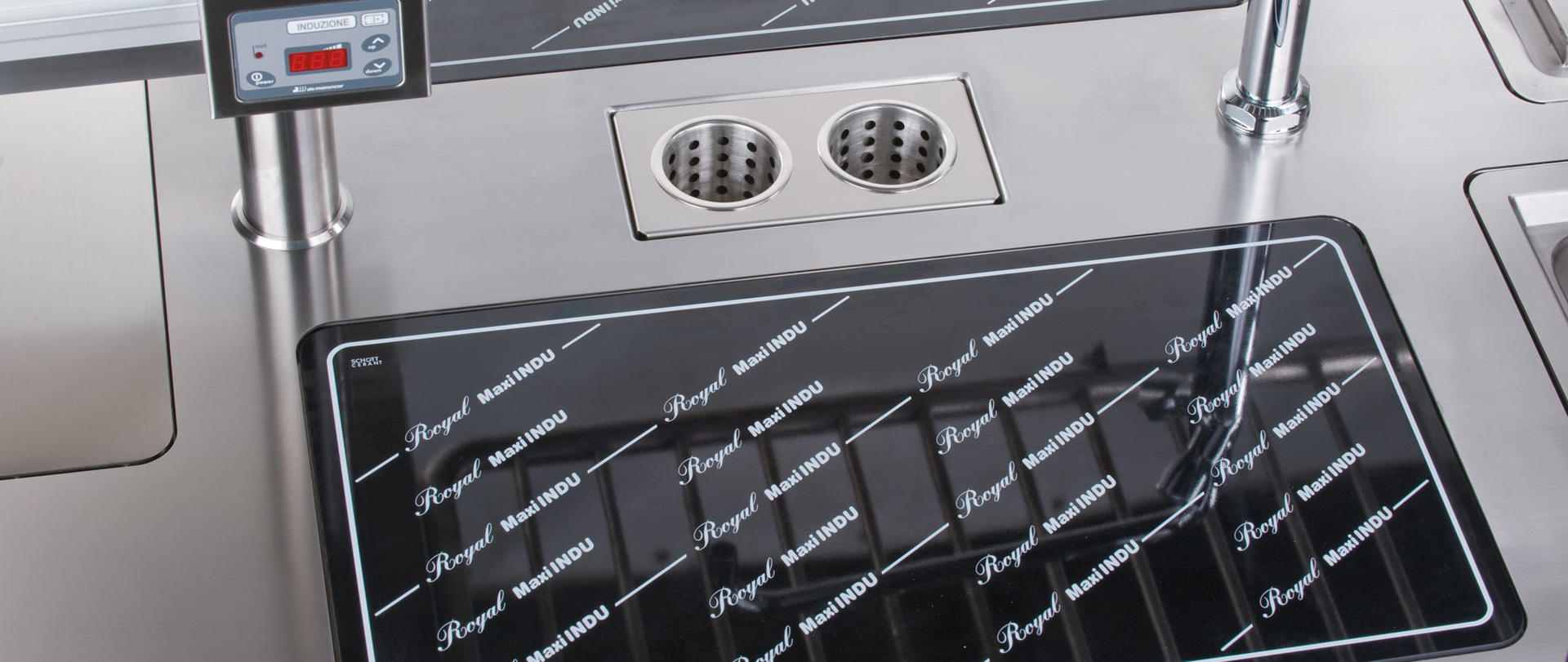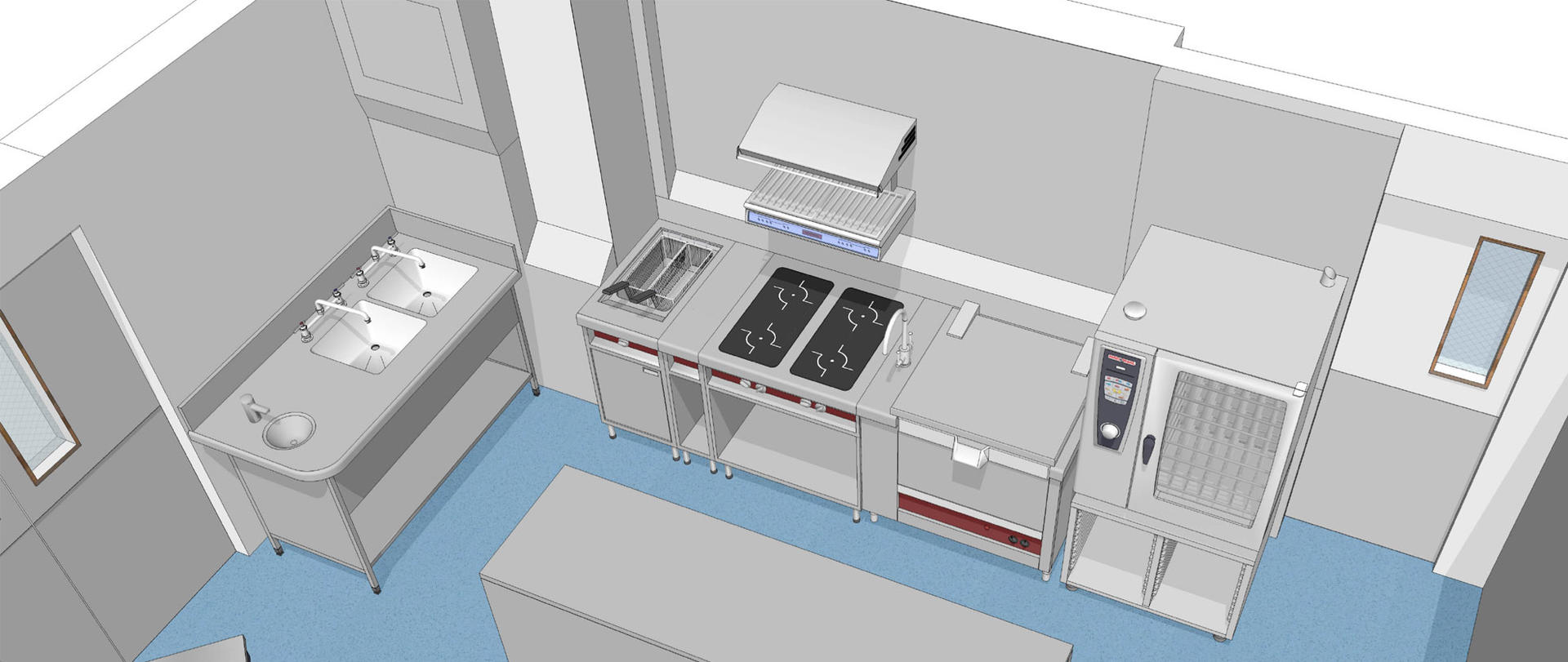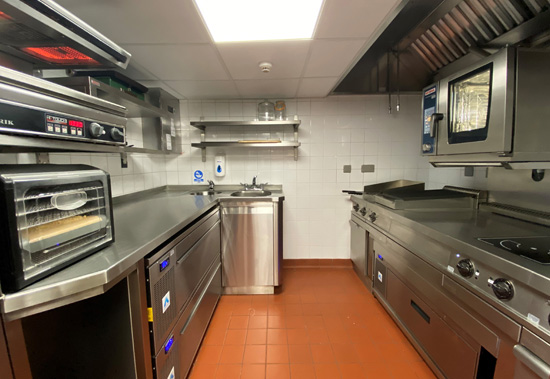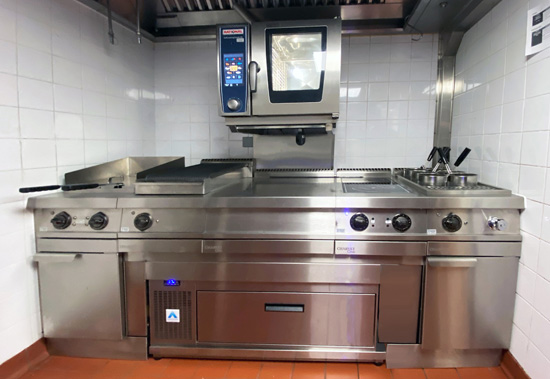Small Commercial Kitchen Design Tips & Trends
Whatever the size of your commercial kitchen, you need to maximise the space in order to serve as many covers that your dining space allows. Small commercial kitchens are common – even prestigious hotels and restaurants have space issues in some of their kitchens. So when it comes to creating a compact commercial kitchen, a great deal of planning needs to be put into the design.
We have been designing and installing small (and large) commercial kitchens for more than 30 years, so we thought it would be useful to pass on our tips about using smaller commercial kitchen space, as well as taking a closer look at current trends in design and appliances.
Ergonomic Flow & 3D Kitchen Design
When designing a small commercial kitchen, how you use the space available is key. You not only need the right kind of equipment to enable you to create your menu, you also need to plan an ergonomic workflow that will allow your chefs to work efficiently, without getting under each other’s feet. It is crucial to get the design right, as poorly designed commercial kitchens will be inefficient and difficult to work in.
Here are some important factors to consider:
- 3D drawings are vital in the planning process as it enables you to visualise the space and how it will be used. It will give you a much better understanding of the space than a 2D plan. It will also help highlight blind spots and dark areas that will make operation difficult, or worse, unsafe.
- Depending on the shape of your kitchen, you can design your workspace using bespoke fabrication to give chefs their own working environment and ensure they do not get in each other’s way.
- Crossing paths and inefficient workflow are a major cause of frustration for chefs, and delay the time it takes to prepare food; a good 3D design will help eradicate this issue with your kitchen installation.
- Allergens and dietary requirements should not be ignored in a compact kitchen, and the right ergonomic flow can prevent cross-contamination and ensure you continue to offer a varied menu for your customers.
A good ergonomic flow therefore needs to follow a specific process from raw materials to food prep, cooking, wash-up and so on. So you will also need to consider how dirty plates and the wash-up area is integrated into the kitchen.
Need help with a compact commercial kitchen?
Multi-Use Equipment
Kitchen equipment that performs a variety of functions is perfect for small commercial kitchens. Multi-use equipment is particularly important if you serve breakfast, lunch and dinner. You may require a fryer for lunch and dinner, but as you do not use it at breakfast, the space it takes up is redundant 33% of the time.
A great piece of versatile multi-use catering equipment is the Rational VarioCookingCenter®:
- It gives your chefs the option to fry, deep-fry, boil and more. This will in turn reduce the need for potentially three pieces of equipment that serve one purpose each.
- It has a pressurised capability that will allow you to safely leave it working overnight in order to cook stocks and sauces. This then helps with reducing the preparation time and number of chefs needed throughout the day.
Another clever piece of kit is the intelligently designed and energy-saving compact Rational iCombi Pro XS which is specifically made for small kitchens. It enables you to grill, bake, fry, roast, steam or poach, giving you the capacity to serve up to 80 covers a day.
It’s small enough to be kept out of the way on a shelf, enabling you to make the most of work surface space and floor space.
The Pro XS is also self-cleaning, saving your staff a lot of time and ensuring other areas of the kitchen can be cleaned at the same time, reducing the time spent on the task and the number of staff needed.
The iCombi range comes in various sizes to suit various kitchen sizes, with the largest, the 20-2/1, giving you the capacity to serve up to 500 covers a day!

Induction Technology
Induction technology has proved hugely beneficial to chefs in kitchens of all sizes. Induction hobs take up less space than the traditional gas ones, use less energy and also reduce the ambient heat in a kitchen making it a more comfortable environment for your chefs to work in.
This makes them perfect for small commercial kitchens!
Sensors in the hobs ensure that the hob will only come on if there’s a pan placed on it and will automatically switch off the heat as soon as the pan is removed. Induction hobs have an additional advantage of being a lot easier and quicker to clean, saving even more time and allowing your chefs to get on and do the most important part of their job – cook!
Staff often report greater job satisfaction with the environmental and ergonomic advantages that come after switching to induction technology.

Need help with a compact commercial kitchen?
Commercial Kitchen Design Trends
With so many catering businesses suffering because of the effects of lockdowns, getting customers through the door is more important than ever before. There are a couple of trends that are being adopted more and more by the catering industry, and even the smallest café or restaurant would do well to try and follow them in order to entice new diners inside, as well as retain the loyalty of regular ones.
- Sustainability – Consumers are much more aware of the environment, and there is a definite shift towards sustainability. Plant-based food products, which are more sustainable than meat products, have become the norm, and many smaller cafés and restaurants now specialise in vegetarian and vegan food or are providing more vegetarian options on their menu. Indeed, one study predicts that in the US, sales of plant-based protein and meat alternatives will increase from $4.6bn in 2018 to around $85bn in 2030. Demand for locally sourced food is also growing as consumers become more aware of food miles. Restaurants that are certified by sustainability specialists such as the Marine Stewardship Council can use their eco-credentials as part of their social media activities to create good PR and customer loyalty.
- Theatre-led commercial kitchen design – Thanks to the introduction of technology such as self-cleaning and multi-use equipment as well as induction hobs, the working environment in commercial kitchens has become a lot quieter, more efficient and more comfortable. Many restaurants are opening up their kitchen space so diners can watch the chefs working, which adds an exciting sense of theatre to their experience. The additional benefit of a theatre-led kitchen for small establishments is that you can open up the space, which will make your restaurant appear larger and could even create room for additional covers, which is hugely desirable in a time when social distancing measures must be put in place for diners.

Case Study
We were asked to design and install a commercial bar kitchen for a 5-star hotel. There was only a tiny space available – just 3m x 2.3m – in which two chefs had to work.
The menu had been limited as the chefs had been on top of each other, meaning their working environment was uncomfortable and impractical.
We redesigned the space and installed a Charvet range which was created specifically for small commercial kitchens, as well as a Rational combi-oven which was wall-mounted to make better use of the space. By placing the oven in the centre of the kitchen, the two chefs were able to use it simultaneously, with no need to work around each other.
In addition, we installed Adande chef base two-drawer refrigeration which can be used as a freezer or fridge depending on demand. Finally, we installed a heated pass between the kitchen and the bar door which means that front-of-house staff do not need to enter the kitchen and disturb the chefs.
The client was very happy with the result: “It’s such a small space, we weren’t even sure our needs could be met, but TAG somehow managed to squeeze in extra equipment, and it feels more spacious! The chefs love it as it’s a lot easier to work in.”


Commercial kitchen design for small spaces
Making the most of the space in your small commercial kitchen will improve working conditions for your chefs at the same time as allowing your café, pub or restaurant to offer a wider menu. Get in touch with us to find out more.

